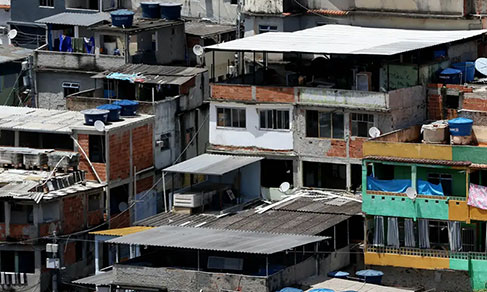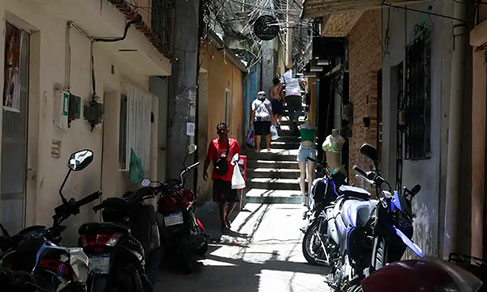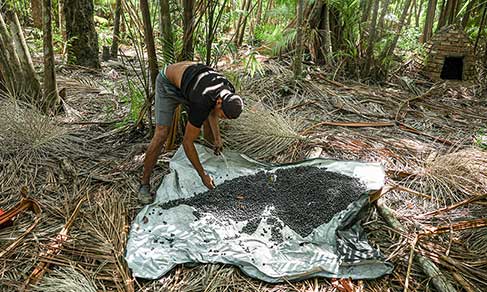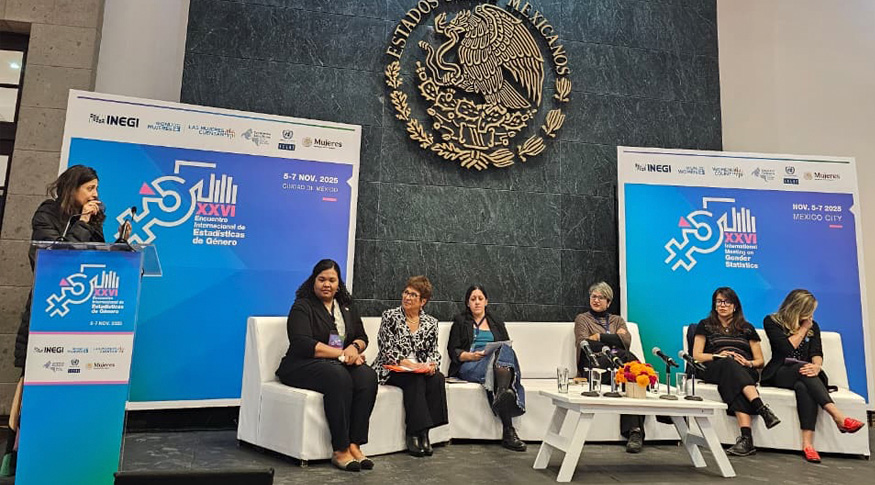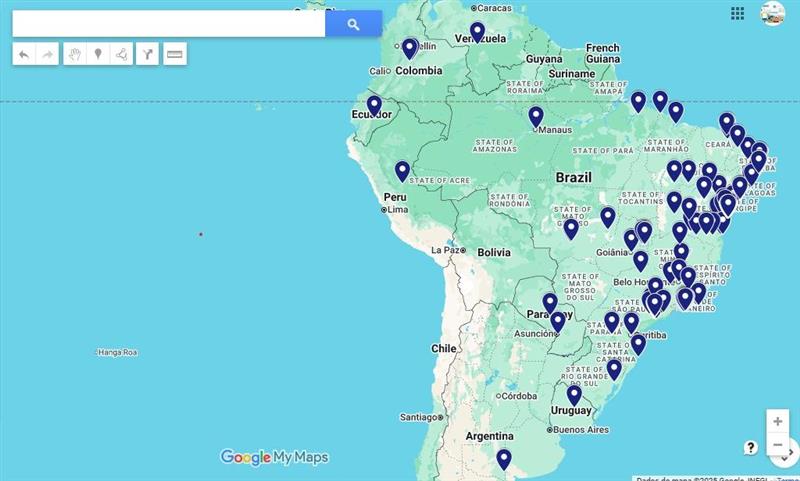2022 Census
Brazil has 90 million housing units, 34% more than in 2010
June 28, 2023 10h00 AM | Last Updated: June 29, 2023 10h45 PM
Highlights
- The number of housing units in the country increased by 34% from 2019, and now amounts to 90.7 million.
- The capital of São Paulo, as the most populous municipality in the country, also has the biggest number of housing units, 4.9 million Agains to data of 2010, that means an increase of 27%. Frente aos dados de 2010, o crescimento foi de 27%.
- In the country, the average of residents per housing unit is 2.79, with a drop from 2020 (3.31).
- In 2022, population density in Brazil reached 23.9 residents per km².
- Population density remains unevenly distributed the Major Regions In the North Region, which holds 45.2% of the territory in the country, desnsity if 4.5 residents/km². In the Southeast, the average if 91.8 persons per square kilometer.
- Permanent private housing units increased by 87%, and reached 11.4 million, whereas those for occasional use increased by 70% in 12 years, amounting to 6.7 million.
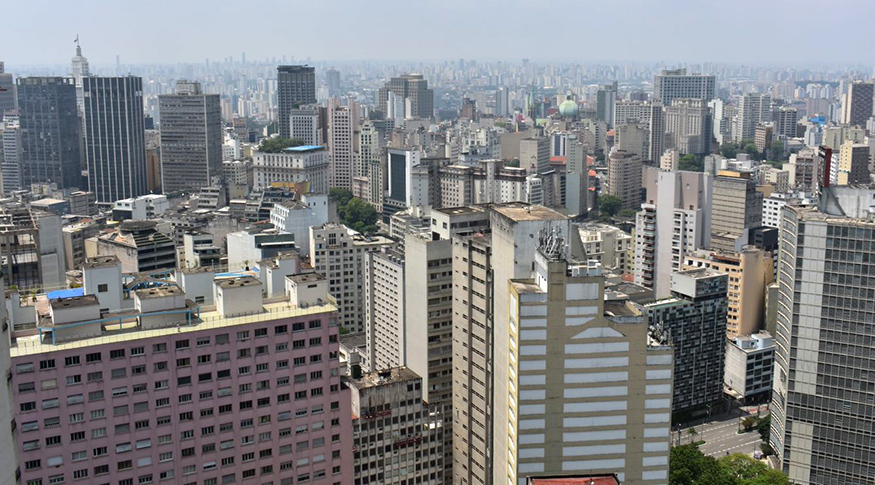
In 2022, there were 90.7 million housing units in the country, an increase of 34% agains the 2010 Census, when there were 67.5 million. Among the housing units enumerated in 2022, 90.5 million were permanent private ones and 72.4 million were occupied during the census operation, an increase of 26% in the same period. Improvised housing units amounted to 66 thousand and collective ones were 105 thousand. These are the first results of the 2022 Population Census, released today (28) by the IBGE.
This increase in the total number of housing units in the country is related to the significant increase in two categories: vacant housing units and those for occasional use. As for permanent private housing units, in which the two types are added up, the increase amounted to 80%, and reached 18 million in 2022. Vacant private housing units increased by 87%, and reached 11.4 million, whereas those for occasional use increased by 70% in 12 years, adding up to 6.7 million. The three municipalities with the highest percentage of vacant housing units are located in the Northeast São João do Jaguaribe, in Ceará (29.1%), Canavieira, in Piauí (28.1%) and Bom Sucesso, in Paraíba (27.2%).
“Vacant housing units are those that have no resident. Housing units for occasional use are those occupied part-time, such as summer houses. Since 2010, the increase of occupied housing units was bigger, in absolute figures; in terms of proportion, however, non-occupied housing units recorded a hgher increase in the period,” says the technical manager for the Census, Luciano Duarte.
According to the IBGE demographer Márcio Minamiguchi, besides the increase of vacant housing units and housing units for occasional use, what also accounts for the increase is the change in the structure of families in the country, who are present in a bigger amount of homes nowadays. “With the aging of the population, which is related to a lower fertility rate, it is natural to observe a decrease in the number of residents per housing unit. In the past there was a bigger number of families consisting of a couple with children and, usually, a lot of children. Nowadays there was a decrease in this type of arrangement, with an increase in participation of other arrangements, such as couples without children, single mothers and single-person families. As for couples with children, the number is smaller, usually one or two. That is, there was an increase in the number of arrangements with fewer people.”
As highlighted by the enumerator, the change also caused the decrease in the average number of residents per housing unit in the country, from 3.31 in 2010, to 2.79 in 2022. Although all the states had recorded a decrease in this average, those with a higher number of residents per housing unit are Amazonas (with a change from 4.36, in 2010, to 3.64, in 2022) and Amapá (from 4.26 to 3.63). The states with the lowest averages are Rio Grande do Sul (2.54), Rio de Janeiro (2.60) and Espírito Santo (2.67).

São Paulo concentrates most housing units
The number of housing units increased in all the states and in the Federal District. São Paulo, which concnetrated about one fifth of the Brazilian population (21.8%), had 19.6 million housing units in 2022, the biggest number among the states. Twelve years before, there were 14.9 million. The second most populous state is Minas Gerais, with 9.6 million housing units. Among the states with the smallest number of housing units are Roraima (211.9 thousand), Amapá (251.9 thousand) and Acre (319.3 thousand).

As it is the most populous city, the capital of São Paulo has the biggest number of housing units in the country, with 4.9 million. In comparison with data of 2010, when 3.9 million were enumerated, there was an increase of 27%. Of the 20 municipalities with the biggest number of enumerated housing units, the highlights were, besides São Paulo, Rio de Janeiro, Salvador, Brasília, Fortaleza and Belo Horizonte, all of them with increases above 20% against 2010. The five capitals had more than 1 million housing units on the reference date of the Census. Other municipalities recorded increases of more than 100% in this result, such as Abadia de Goiás, in Goiás, which went from 2,644, in 2010, to 7,866, in 2022 (197.5%).
Among the municipalities with highest percentages of housing units for occasional use there are three in the coast of Rio Grande do Sul: Arroio do Sal (72.1%), Xangri-lá (70.7%) and Cidreira (67.9%). In urban concentrations with the biggest percentage of housing units of this kind, the coastal areas stand out: Tramandaí (45.3%), Rio Grande do Sul, and Caraguatatuba (40%), em São Paulo. Among the capitals, Florianópolis is in the list of 20 urban concnetrations with the highest percentages, with 10.8% of its housing units characterized as of occasional use.
Response rate to the 2022 Census reached 95.8%
The response rate to the 2022 Census, thta is, the percentage of housing units where a resident was interviewed reached 95.8%. The Northeast had the lowest percentage of housing units where the interview was not conducted (2.7%), whereas the Southeast had the highest one (5.9%). In most Federation Units (24 of 27), this percentage was below the average in the country (4.2%) and, among the, Paraíba (1.61%), Roraima (1.75%) and Piauí (2.08%) stand out. The ones above were Rio de Janeiro (4.50%), Mato Grosso (4.31%) and São Paulo (8.11%).

Brazil has 23.8 persons per square kilometer
With the increase of the population between 2010 and 2022, having reached the total of 203.1 million persons, demographic density in the country went from 22.43 to 23.8 residents per square kilomenter (km²) in the same period. Historically, there have been bigger concentration of persons in the coastal areas of the territory.
The first resuls of the 2022 Census reveal the continuity of inequality among the Major Regions because of the difference in the size of territories. In the North, where the territory of 3,850,593 km2 accounts for 45.2% of the territory surface of the country, densiy reaches 4.5 hab/km². In the Southeast, the most populous region in the country, there is also the biggest number of residents per square kilometer. 91.8. That means 924,558 km2 with 84.8 million residents.
In the Central West, second biggest Major Region in terms of territory (1,606,354 km²), demographic desnsity reaches 10.1 residents/km². The Northeast, which has a territory of 1,552,175 km² and the second biggest population in the country (54.6 million), has 35.2 residents/km². The South, with the smallest territory among the Major Regions (576,737 km²) and a population of 29.9 million, has rhe second highest average of residents per square meter: 51.9.
Among the Federation Units, the Federal District has the highest population density (489 residents/km2) with its 2.8 million residents living in a territory of only 5 761 km2 of area. Rio the Janeiro is the number two, with 367 hab/km2. The state population amounts to more than 16.1 million spread over 43,750 km2. Having the biggest population in the country and living in a territory of 248,219 km², São Paulo, has a density of 179/km², third one in the ranking of Federation Units.
In urban concentrations population arrangements above 100 thousand residents with strong integration of the population or isolated municipalities of the same size, the highest averages of residents per square kilomenter were those of São Paulo (2,888,78) and Rio de Janeiro (1,934,13). The highlights regarding population density were Taboão da Serra (SP), Diadema (SP), São João de Meriti (RJ), Osasco (SP), Carapicuíba (SP) and São Caetano do Sul (SP), all of which have more than 10 thousand residents per square kilometer.
“We have seen that the biggest municipalities are heterogeneous when it comes to population density. Whereas São Paulo has almost 3 thousand persons per square meter.
More about the survey
The Population Census is the biggest and most complete statistical operation in the country. The survey aims at knocking at every door of the 5570 Brazilian municipalities in order to produce a vivid portrait of our society. In the first results, the Census presents data on population, housing units, area of municipalities and population desnsity for the Brazil, its Major Regions, States, Federal District, Municipalities and urban concentrations. See the main results, graphs and maps on the page 2022 Census Overview.


